Maxwell Wojcik, Dr. Amy Moll, Dr. Noah Salzman, Dr. Vicki Stieha, Iris Torres, Edward Bowers
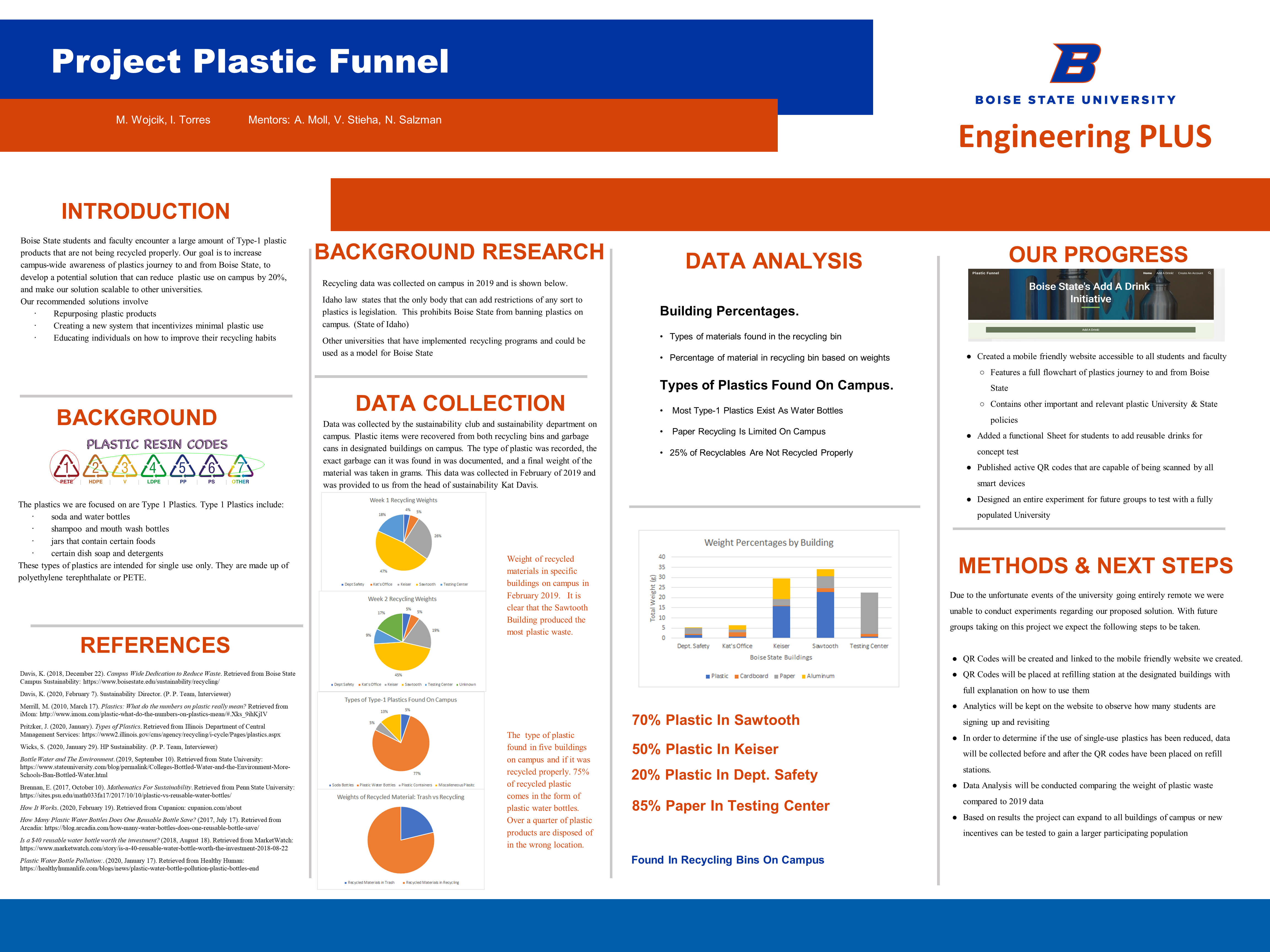
Introduction
Boise State students and faculty encounter a large amount of Type-1 plastic products that are not being recycled properly. Our goal is to increase campus-wide awareness of plastics journey to and from Boise State, to develop a potential solution that can reduce plastic use on campus by 20%, and make our solution scalable to other universities.
Our recommended solutions involve
- Repurposing plastic products
- Creating a new system that incentivizes minimal plastic use
- Educating individuals on how to improve their recycling habits
Background

The plastics we are focused on are Type 1 Plastics. Type 1 Plastics include:
- soda and water bottles
- shampoo and mouth wash bottles
- jars that contain certain foods
- certain dish soap and detergents
These types of plastics are intended for single use only. They are made up of polyethylene terephthalate or PETE.
Background Research
Recycling data was collected on campus in 2019 and is shown below.
Idaho law states that the only body that can add restrictions of any sort to plastics is legislation. This prohibits Boise State from banning plastics on campus. (State of Idaho)
Other universities that have implemented recycling programs and could be used as a model for Boise State
Data Collection
Data was collected by the sustainability club and sustainability department on campus. Plastic items were recovered from both recycling bins and garbage cans in designated buildings on campus. The type of plastic was recorded, the exact garbage can it was found in was documented, and a final weight of the material was taken in grams. This data was collected in February of 2019 and was provided to us from the head of sustainability Kat Davis.
Weight of recycled materials in specific buildings on campus in February 2019. It is clear that the Sawtooth Building produced the most plastic waste.
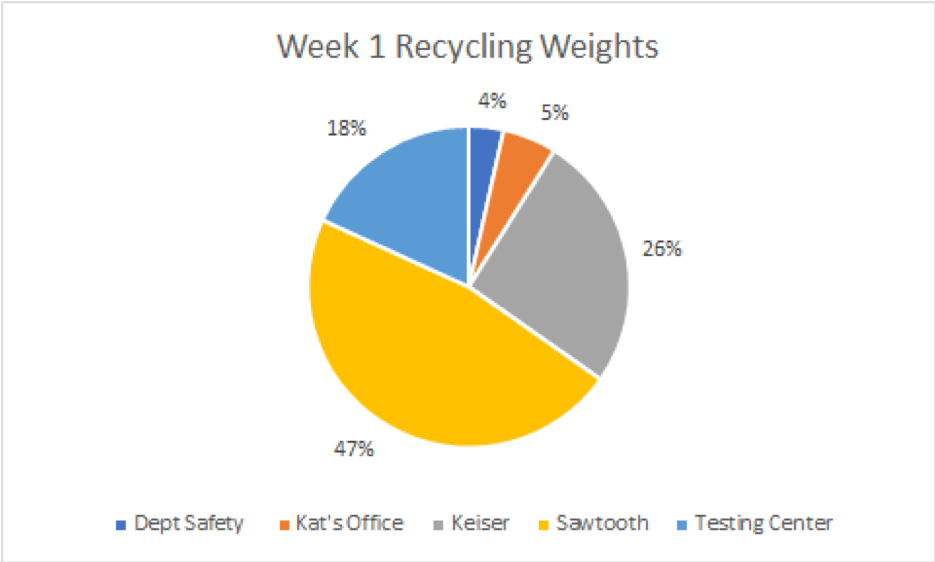
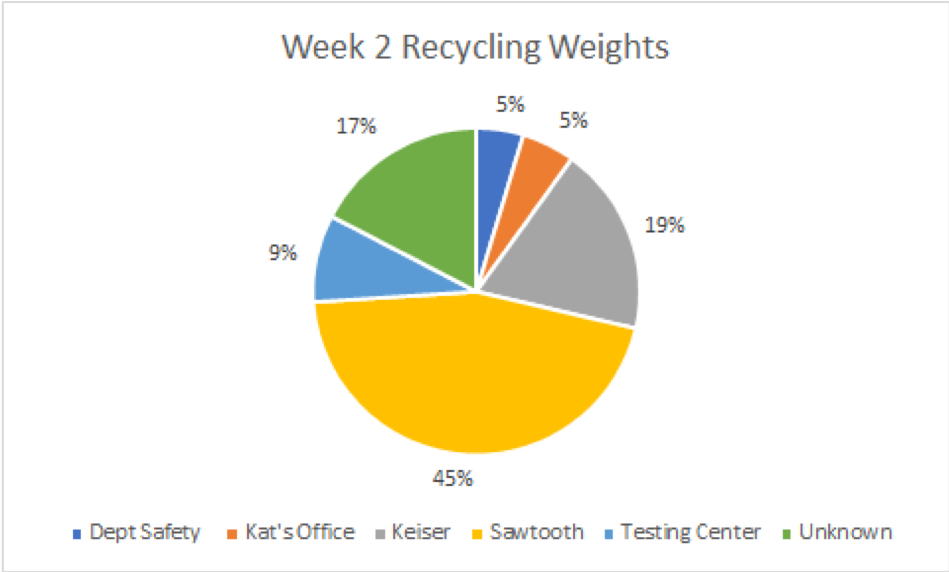
The type of plastic found in five buildings on campus and if it was recycled properly. 75% of recycled plastic comes in the form of plastic water bottles. Over a quarter of plastic products are disposed of in the wrong location.
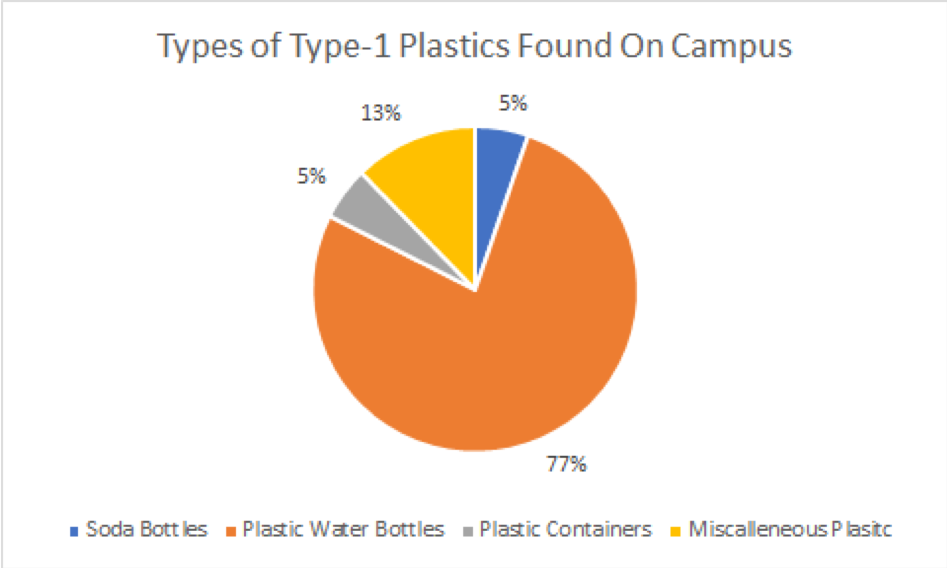
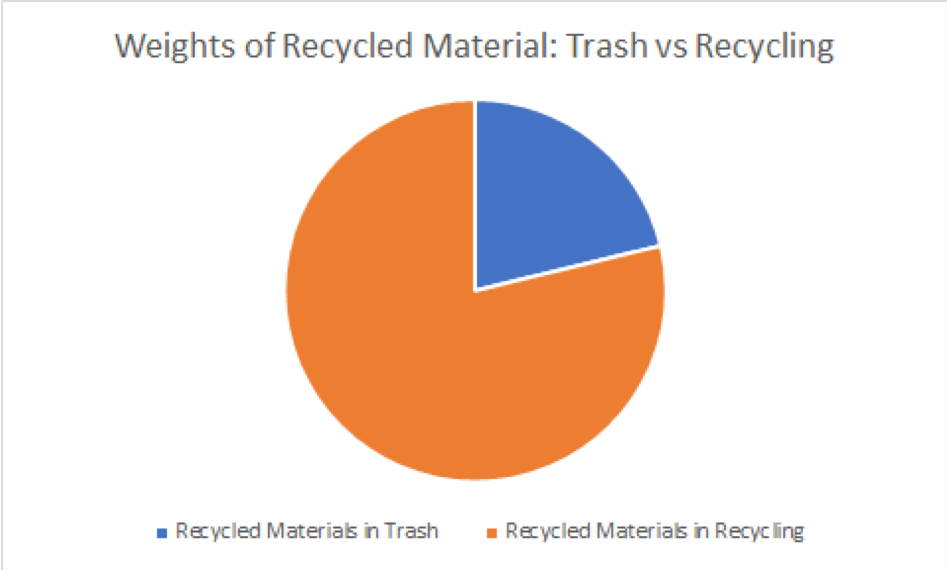
Data Analysis
Building Percentages.
- Types of materials found in the recycling bin
- Percentage of material in recycling bin based on weights
Types of Plastics Found On Campus.
- Most Type-1 Plastics Exist As Water Bottles
- Paper Recycling Is Limited On Campus
- 25% of Recyclables Are Not Recycled Properly
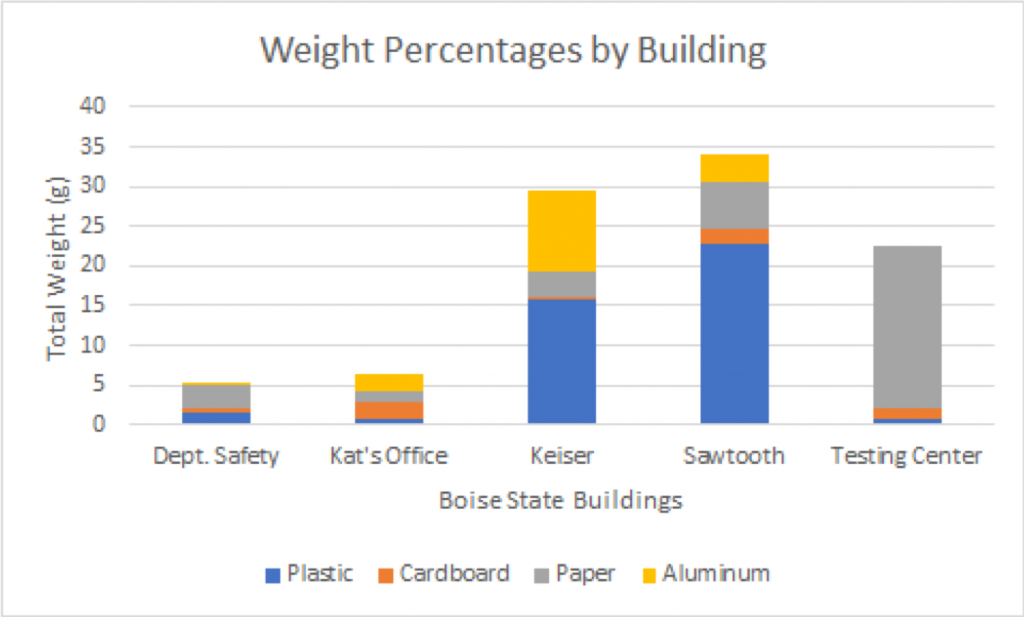
Found In Recycling Bins On Campus
- 70% Plastic In Sawtooth
- 50% Plastic In Keiser
- 20% Plastic In Dept. Safety
- 85% Paper In Testing Center
Our Progress

- Created a mobile friendly website accessible to all students and faculty
- Features a full flowchart of plastics journey to and from Boise State
- Contains other important and relevant plastic University & State policies
- Added a functional Sheet for students to add reusable drinks for concept test
- Published active QR codes that are capable of being scanned by all smart devices
- Designed an entire experiment for future groups to test with a fully populated University
Methods & Next Steps
Due to the unfortunate events of the university going entirely remote we were unable to conduct experiments regarding our proposed solution. With future groups taking on this project we expect the following steps to be taken.
- QR Codes will be created and linked to the mobile friendly website we created.
- QR Codes will be placed at refilling station at the designated buildings with full explanation on how to use them
- Analytics will be kept on the website to observe how many students are signing up and revisiting
- In order to determine if the use of single-use plastics has been reduced, data will be collected before and after the QR codes have been placed on refill stations.
- Data Analysis will be conducted comparing the weight of plastic waste compared to 2019 data
- Based on results the project can expand to all buildings of campus or new incentives can be tested to gain a larger participating population
References
- Davis, K. (2018, December 22). Campus Wide Dedication to Reduce Waste. Retrieved from Boise State Campus Sustainability: https://www.boisestate.edu/sustainability/recycling/
- Davis, K. (2020, February 7). Sustainability Director. (P. P. Team, Interviewer)
- Merrill, M. (2010, March 17). Plastics: What do the numbers on plastic really mean? Retrieved from iMom: http://www.imom.com/plastic-what-do-the-numbers-on-plastics-mean/#.Xks_9ihKjIV
- Pritzker, J. (2020, January). Types of Plastics. Retrieved from Illinois Department of Central Management Services: https://www2.illinois.gov/cms/agency/recycling/i-cycle/Pages/plastics.aspx
- Wicks, S. (2020, January 29). HP Sustainability. (P. P. Team, Interviewer)
- Bottle Water and The Environment. (2019, September 10). Retrieved from State University: https://www.stateuniversity.com/blog/permalink/Colleges-Bottled-Water-and-the-Environment-More-Schools-Ban-Bottled-Water.html
- Brennan, E. (2017, October 10). Mathematics For Sustainability. Retrieved from Penn State University: https://sites.psu.edu/math033fa17/2017/10/10/plastic-vs-reusable-water-bottles/
- How It Works. (2020, February 19). Retrieved from Cupanion: cupanion.com/about
- How Many Plastic Water Bottles Does One Reusable Bottle Save? (2017, July 17). Retrieved from Arcadia: https://blog.arcadia.com/how-many-water-bottles-does-one-reusable-bottle-save/
- Is a $40 reusable water bottle worth the investment? (2018, August 18). Retrieved from MarketWatch: https://www.marketwatch.com/story/is-a-40-reusable-water-bottle-worth-the-investment-2018-08-22
- Plastic Water Bottle Pollution:. (2020, January 17). Retrieved from Healthy Human: https://healthyhumanlife.com/blogs/news/plastic-water-bottle-pollution-plastic-bottles-end